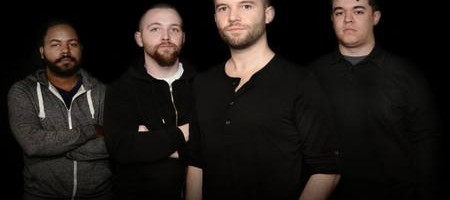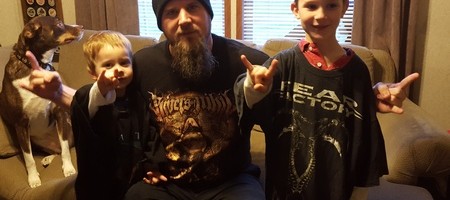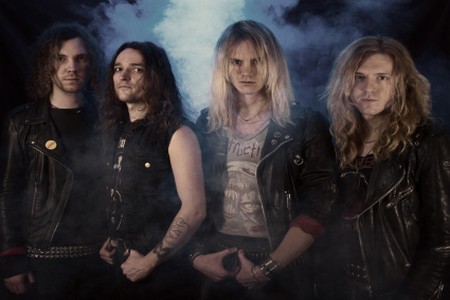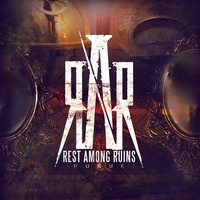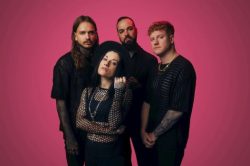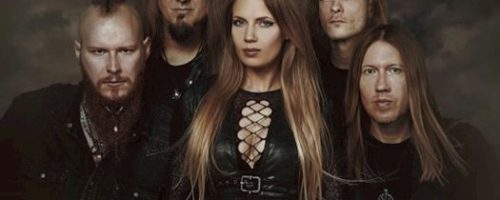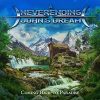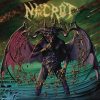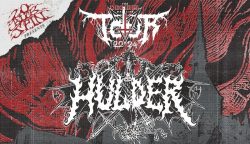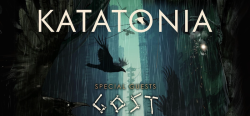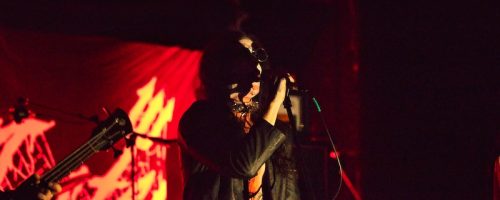Rest Among Ruins – Taking Listeners on a Journey Part I
Wednesday, 17th June 2015
The problem with most music is that it “sounds like someone else.” With the easier access to creating and publishing music on your own, it’s become even more difficult to establish a sound that one can claim as their own. On their debut, Fugue, Rest Among Ruins manages to show themselves as willing to work to design their own sound. With influences and nods from diverse genres such as melodic death metal, rock, progressive, and djent (among others), Fugue touches upon familiar sounds but creates one that feels unique.
Certainly a key factor in this is main man Mike Semesky. Having a vocal range that can switch between menacing roars to soft, emotive cleans is always an asset to a band, and his involvement in writing a majority of the album (it is “his baby” as you can read below) ensured that the music would be just as diverse. Adding to the palette is the fact that Fugue is a concept album, which has some fantastic flow among the tracks. Being a bit enamored with the end product, we were able to chat with Mike Semesky about Rest Among Ruins just before Fugue’s release date, as well as his other projects (of which there are many).
Dead Rhetoric: Where does the name Rest Among Ruins come from?
Mike Semesky: People have asked me this one before, and it’s a disappointing answer every time. There really is no specific significance to the name Rest Among Ruins. It just happened to flow well when we were brainstorming names, when we first came together years ago. It was around the same time as From Autumn to Ashes, All that Remains, and Haste the Day were big. Somewhere around the 2008-2010 time period, when 3-word names were the hype. Rest Among Ruins just happened to fit.
Dead Rhetoric: Is there any history behind the band that you can go into? I didn’t realize it went so far back…
Semesky: It was actually my first metal band. This was before The HAARP Machine, before Intervals, before Raunchy. I started this band in 2008 and it was kind of a different line-up back then. We released an EP under the name Rest Among Ruins and we were playing locally. We did a few DIY tours and some cool support slots for All that Remains and Soilwork and Periphery. We had done some pretty great shows, and a few not so successful DIY tours, as most DIY tours turn out unfortunately. We sort of went under the radar after some member changes. The only original members, I would say, are myself and the drummer [Geoff Palmer]. It was very much my baby. I actually play all the rhythm guitars, all the bass, and all the vocals on the album. Not only lyrically is it my child, but I basically wrote and arranged the songs themselves. That was the case back then as well.
I first started learning how to record back in 2006 or so. I had this really awful program called CoolEdit Pro. I was recording directly in with I think a Fender Strat or something like that. It started with me starting with a few songs and forming a band around it. When The HAARP Machine, Raunchy, and Intervals came around, we had been working on an album for a while – Fugue. It sort of became a studio project that myself, the drummer, and our lead guitarist were a part of. It was produced by a guy named Drewsif Stalin, who I go way back with. We grew up together and were neighbors. He’s a really good dude and really good at production.
Dead Rhetoric: So how much of Fugue was written by you then?
Semesky: All the lyrics were, and the songs themselves were arranged by me too. I guess the only thing that I didn’t write were the lead guitars and the drums.
Dead Rhetoric: Fugue is a concept album, could you explain where the inspiration came from for the album?
Semesky: I went to school for clinical psychology and I had started working at a psychiatric hospital. I continued to work there a few years after I graduated back in 2008, which is right around Rest Among Ruins time, so you can see how things line up there. Before The HAARP Machine, I was working on this album. I worked in a crisis stabilization unit for male adolescents. So generally speaking, people coming in with their first psychotic/manic/depressive episode – some of these kids were suicidal, and they had to come in and get meds and get stabilized. We did some group counseling sessions, and that’s where my part was. Occasionally we would get assigned to different units in the hospital. I was assigned to a trauma disorders unit and I encountered this one client there who had the most incredible story. You hear about dissociative identity disorder, commonly known as multiple personalities – that’s what you hear about most when you hear about dissociative disorders. To dissociate is basically your mind going into a different level of consciousness.
Fugue is very rare. It’s basically when your mind, usually following a tragic event, creates memories and a new identity for yourself. This person, obviously because they were a patient at a hospital that I worked at, I can’t go into detail but it’s amazing how they were discovered. His wife thought that he had died, he had disappeared years before. He was discovered on the radio, on a commercial. He was hosting this advertisement and she recognized his voice and found out who it was. Turns out it was her husband who had left 5 years ago. He had no recollection of her or anything. It was pretty incredible – that’s sort of the basis of the story. Most of the story [of the album] is going in and out of these dreams that he would describe and that I read about in his progress notes and reading his records to familiarize myself with him. It was surreal.
Pages: 1 2











